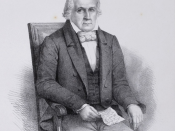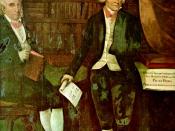In 1817, an aging Swedish chemist was pouring over his work on a late afternoon in Stockholm, Sweden. He was analyzing a strange ore named Petalite that had been procured from an island off the coast of Sweden called Utö. The ore Petalite (which is now recognized to be LiAl(Si2O5)2) had been discovered by a Brazilian scientist, José Bonifácio de Andrada e Silva towards the end of the 18th century on a visit to Sweden. This Swedish scientist, Johann August Arfvedson, detected traces of an unknown substance in his sample of Petalite. This was the first discovery of Lithium.
From the Greek word "lithos" meaning "stone", it was so named due to the fact that it was discovered from a mineral source; whereas the other two common Group 1 elements, Sodium and Potassium, were found in plant sources. Its symbol, Li, was taken directly from its name. Soon after stumbling upon Lithium, Arfvedson also found traces of the metal in the minerals Spodumene and Lepidolite.
In 1818, C.G. Gmelin discovered that Lithium salts color flames a bright red. Neither, Gmelin or Arfvedson, however, were able to isolate the element itself from the Lithium salts. They both tried to reduce the oxide by heating it with Iron or Carbon, but neither met with the success of W.T. Brande and Sir Humphrey Davy. They managed to perform the first isolation of elemental Lithium by the electrolysis of Lithium oxide. Electrolysis is a chemical reaction, which is brought about by the passage of current from an external energy source such as a battery. In 1855, the scientists Bunsen and Mattiessen isolated larger quantities of the metal by electrolysis of Lithium chloride.
Each scientist or team of scientists had so much trouble reducing the Lithium compounds because Lithium does not exist in its...


